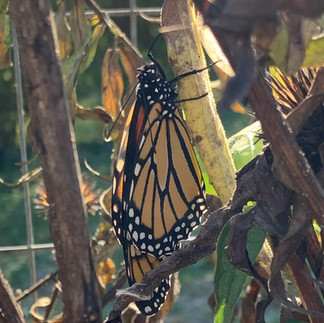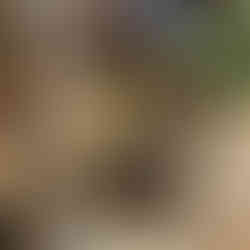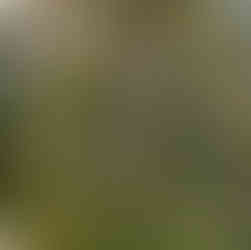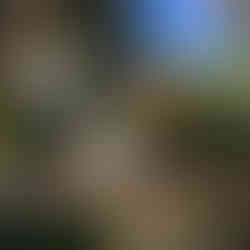Eleven Monarchs
- Cheryl
- Feb 6
- 5 min read

Last year we provided a habitat that enabled eleven monarch butterflies to come into the world.
From August to October, I spent much of my time out in our garden area, watching for caterpillars, studying chrysalises and worrying about whether these delicate, endangered butterflies would emerge and fly south.
Eleven of them did. Each one was a miracle that began in the most unlikely of places—a re-purposed plastic milk jug.
Growing native milkweed from seed
Monarch butterflies lay their eggs on only one plant in the world: native milkweed. No milkweed, no monarchs.
Most of us don’t have milkweed plants growing in our backyards. You either have to dig it up along a roadside, try to find it at a nursery, or grow it from seed.
But you can’t just plant some milkweed seeds in the spring and expect to get mature plants—and monarchs—in the summer. Like many native wildflowers, milkweed seeds require a period of cold/moist stratification in order to break their dormancy and germinate.
I had taken an online seminar from Penn State Extension on winter sowing in 2023 and learned how to create the right environment for native wildflower seeds to germinate by sowing them in milk jugs with a little soil and exposure to the elements.
Armed with my notes from the seminar, some potting soil, duct tape, milk jugs and seeds, I sowed rose milkweed, purple coneflower, Joe Pye weed and larkspur in February 2023. I sealed up the jugs, left the caps off and put them in the yard on the northeast side of the house. There the seeds would be exposed to the temperature fluctuations and cold precipitation they would need for the next 30 to 60 days in order to come to life.


In late March we had lots of little seedlings emerging in the jugs. The milkweed grew easily. I sat outside for hours gently removing the seedlings from the jugs and planting them in recycled pots.


By late April, all the plants were ready to go into the ground.


They tell you not to expect these native wildflowers to bloom the first year, but we got lucky and had milkweed flowering everywhere by July. It was a magnet for honey bees and bumblebees.
I would have been happy with just the flowers alone in the summer of 2023. So when I saw a green chrysalis with little gold flecks on the underside of a milkweed leaf that summer, I was ecstatic.

One morning about a week later, I went out to check the chrysalis and there was our first-ever monarch butterfly.

I went in and got Jimmy. We both bent down and watched this delicate little treasure in awe. As far as we know, this was the only butterfly that came to life on our new milkweed that year.
2024: Adversity, beauty and survival
Our milkweed grew vigorously last year. It was well established and had even self-seeded in several areas. Despite lots of flowers, we didn’t see the first monarch come to feed on nectar and lay eggs until July 24, a full month later than the previous year. Many monarch enthusiasts I follow online had the same observation.

Once they began to visit, it wasn’t long until we started to see little caterpillars all over our milkweed plants.
We were thrilled. I counted them daily, watched them move from one plant to another, felt the disappointment of losing a few small ones to birds, and protected groups of milkweed that hosted several caterpillars with lightweight insect netting.
All of this was happening here amid a three-month period of drought that made growing anything a challenge. We watered the host plants and provided shade with patio umbrellas.
All of our fussing seemed to work because one by one, the caterpillars chose a secluded area--often away from the milkweed on which they were feeding--and turned into little j shapes, which meant in less than a day’s time, they would shed their skin and transform into a chrysalis.
Watching each monarch become more distinct and visible inside its chrysalis over a period of about ten days was addicting for us. We’d check them in the morning, run the day’s errands then stay close to the garden the rest of the day. I couldn’t get enough of all this life taking shape before my eyes.

On October 7, 2024, our first monarch emerged from the chrysalis. The caterpillar had crawled from a milkweed plant to the underside of a cross piece on our fence. I was able to get the moment of emergence on video, something I’ll remember as long as I live.
From that day to October 28, eleven monarch butterflies wiggled out of their chrysalises, slowly pumped fluid into their wings, felt their surroundings and flew out of our native wildflower beds, heading south. Some emerged within ten days. About five of them stayed in chrysalis longer due to a week of cold rain we got near the end of October. I learned that monarchs can stay in the safety of the cocoon anywhere from a week to over a month and survive.











Not all of our monarchs made it. One appeared to be coming out of Its chrysalis but stopped.

Another emerged after the temperature dipped into the 30’s at night and couldn’t withstand the grip of the morning chill.

Without even realizing it, I had become attached to all of these new butterflies. They had pretty much become my life for three months. I was able to see several fly for the first time and felt the purest kind of joy in my heart. Watching two of them die was sad, but it wasn’t as hard for me as when I discovered a female bluebird that had died near our birdbath in 2023. I think I have begun to learn that nature is at once generous and cruel. My heart has to be able to withstand the cruel moments.
Throughout this experience with the eleven monarchs, I told Jimmy over and over again that we were doing something important and right by providing a native habitat for these captivating creatures to grow and be born. Jimmy agreed. Each time a monarch flies south from our wildflowers, we are putting good into the world.
This is what I believe I am being called by God to do in this chapter of my life. There’s a reason I took a PSU extension seminar in 2021 called The Woods in Your Backyard. There’s a reason I bought Dr. Doug Tallamy’s book Bringing Nature Home and couldn’t put it down. The Holy Spirit led me to these things so that I can care for God’s creation on the tiny patch of the planet we call home.


















































Comentarios